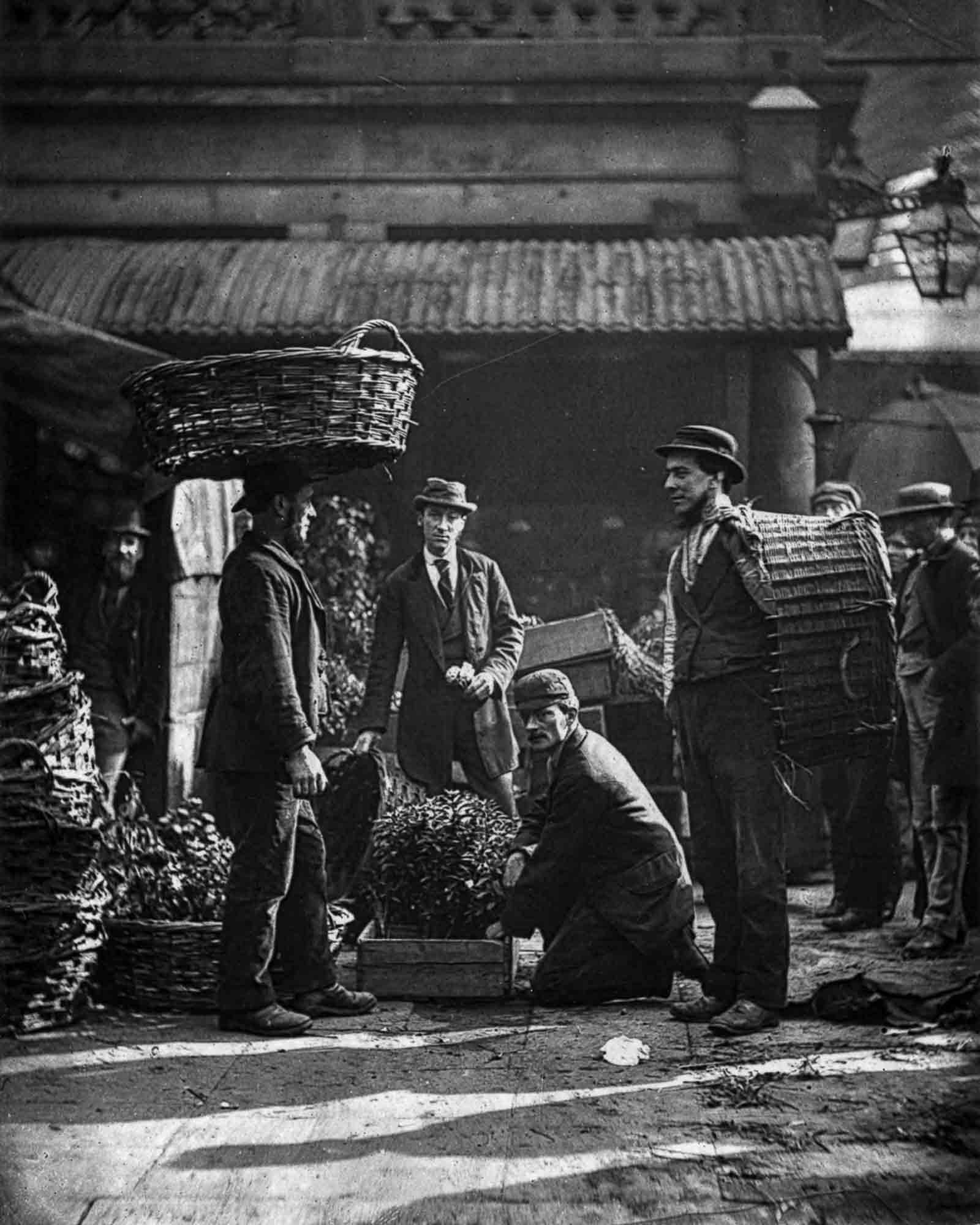
Porters with boxes of plants at Covent Garden market. 1877.
These rare historical photographs were taken from 1873 to 1877 and are part of Street Life in London, a book that was one of the first examples of social documentary photography.
The authors, photographer John Thomson and journalist Adolphe Smith, aimed to reveal by the innovative use of photography and essays the conditions of a life of poverty in London.
Born in Scotland in 1837, John Thomson was a pioneering documentary photographer, one of a breed for whom arduous travel under extremely difficult conditions did little to dampen enthusiasm.
Exploring and photographing China for ten years (1862-72), he published his photographs and texts of his journeys in The Antiquities of Cambodia (1867), Illustration of China and its People (1873-74), and The Straits of Malacca, Indo China and China (1877).
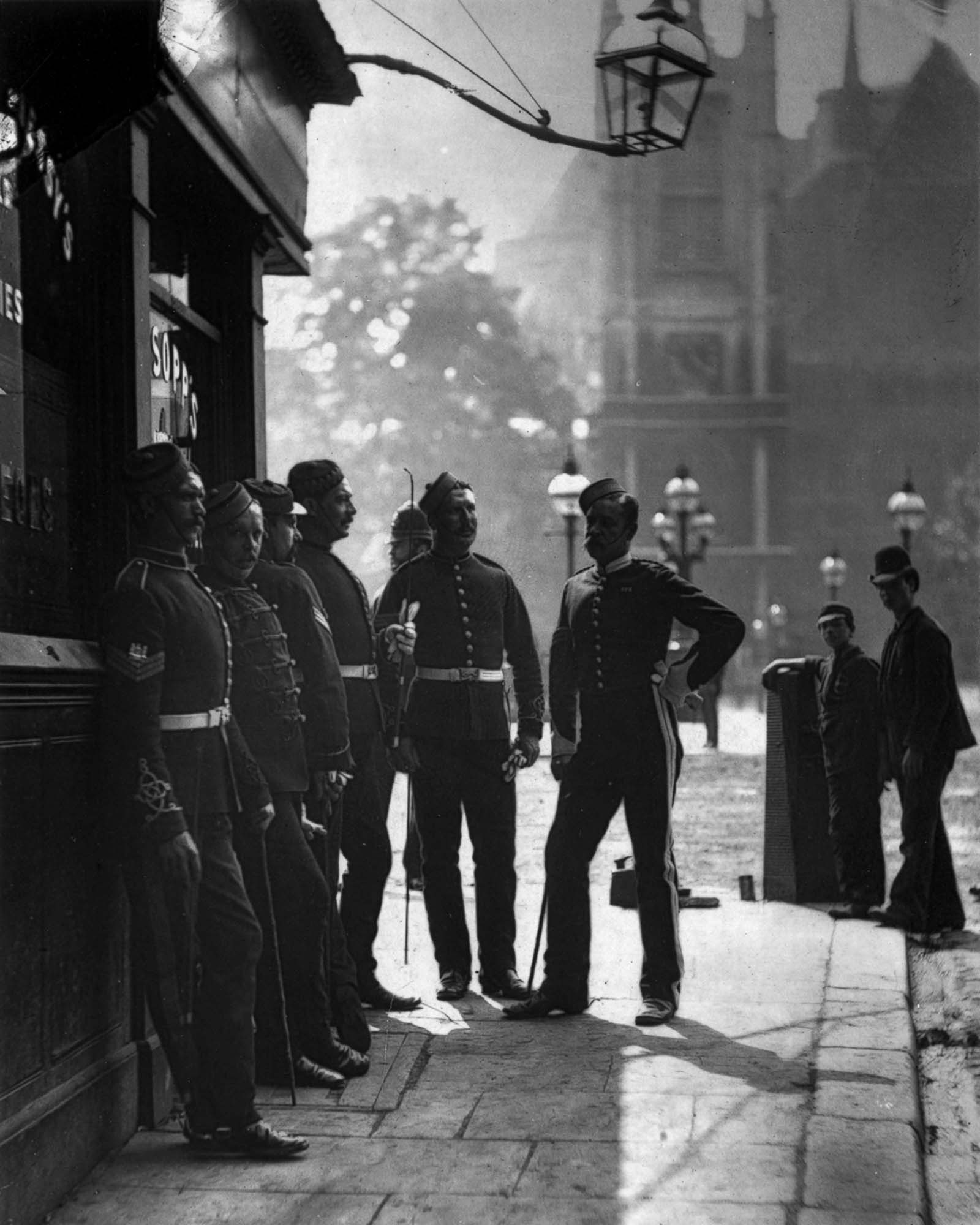
British Army recruiting sergeants outside a public house at Westminster. 1877
Returning to London, Thomson turned his attention to the city, his Street Life in London (1877), frequently credited as the first instance in which photographs were used as social documentation.
He subsequently developed the art of “at home” portraits, was appointed photographer to Queen Victoria and was the photographic adviser to the Royal Geographic Society. He died in 1921.
By the mid-twentieth century, the popular perception of the poor had changed. Previously viewed as morally defective, the poor were now regarded as the object of study and charity.
Henry Mayhew’s monumental London Labour and the London Poor, published in 1851, had been illustrated by woodcuts based on photographs by Richard Beard.
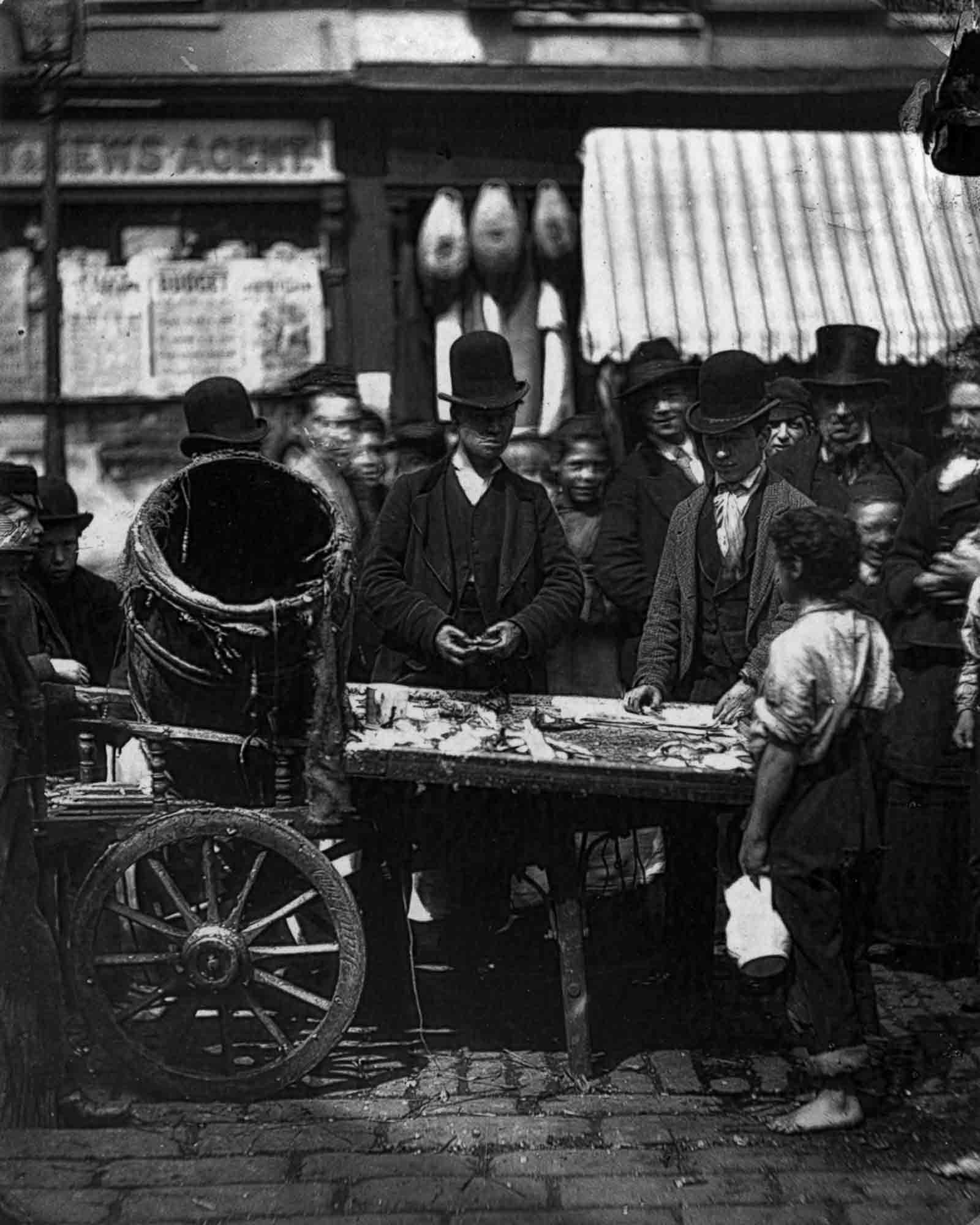
Costermonger Joseph Carney sells fresh herring from his barrow in the street market between Seven Dials and Five Dials in London. 1877.
While Street Life in London is hardly as comprehensive a work as Mayhew’s, it has the virtue that its photographic reproductions not only show the subjects as they actually appeared but, by capturing the contemporary streetscape of London, also reveals them in their milieu.
The book is famous for these street photographs, but the accompanying text should not be ignored.
Thomson wrote some (signed J. T.), but most of it was written by Adolphe Smith (A. S.), a journalist who became an activist concerned with labor and the unions.
Smith’s short essays were based on interviews with a range of men and women who eked out a precarious and marginal existence working on the streets, including flower-sellers, chimney-sweeps, shoe-blacks, chair-caners, musicians, dustmen, locksmiths, beggars, and petty criminals.

A vendor sells cough lozenges.
It is impossible not to detect the sympathy that both Smith and Thomson feel for their subjects who, more often than not, are threatened by deprivation and hunger.
The costumes and backgrounds depicted in the photographs may seem picturesque to us today, but Thomson’s subjects are caught in a seemingly unbreakable cycle of poverty.
According to The Photobook: A History by Martin Parr and Gerry Badger “Structurally, Street Life is a combination of street portraiture… and interviews with the subjects.
Thus it was the direct predecessor of the journalistic picture stories that would appear in illustrated magazines from that period onward. … is a pioneering work of social documentation in photographs and words … one of the most significant and far-reaching photobooks in the medium’s history”.

Bill stickers paste placards advertising Madame Tussaud’s waxworks museum. 1877.
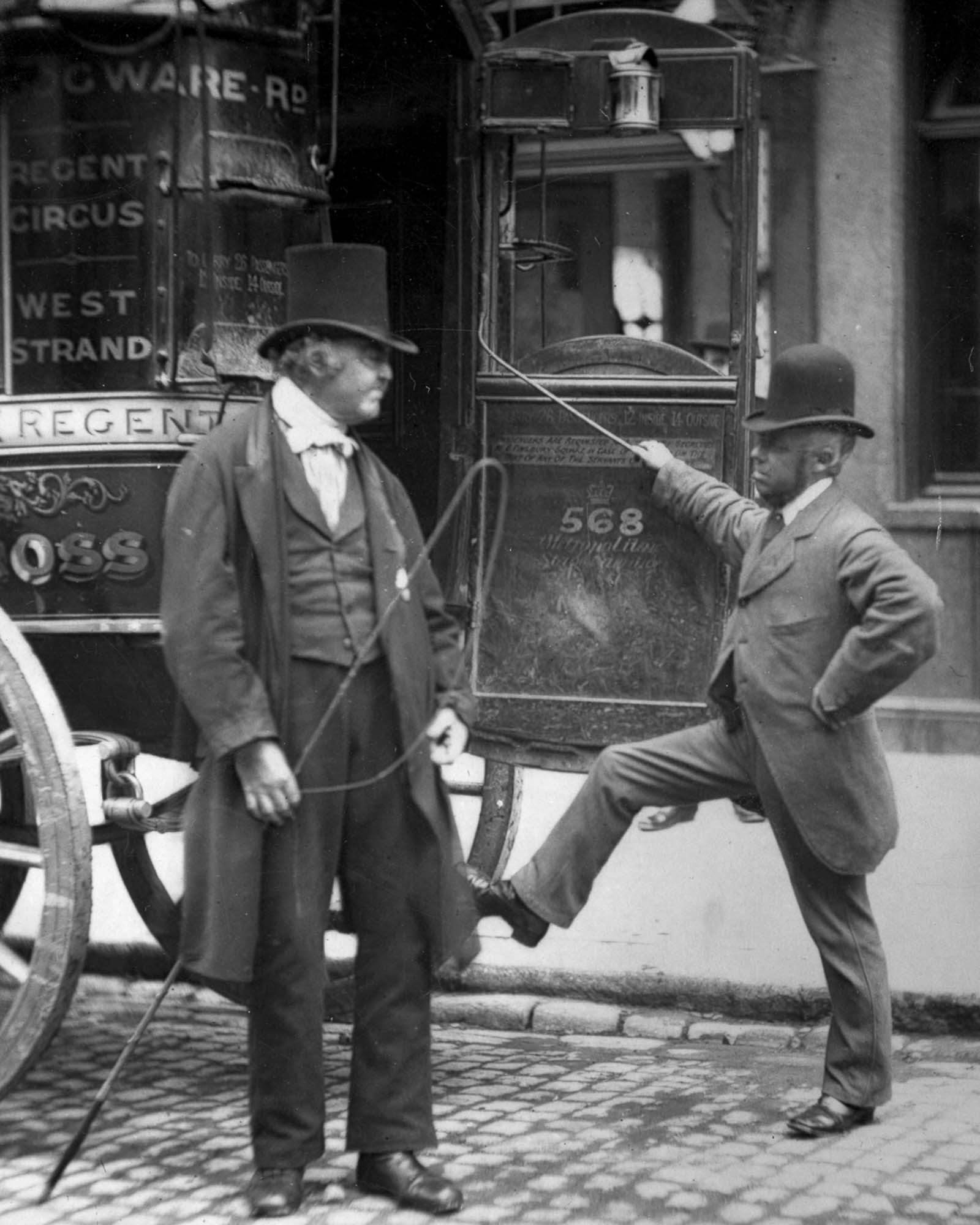
An omnibus driver, known as “Cast-Iron Billy.” 1877
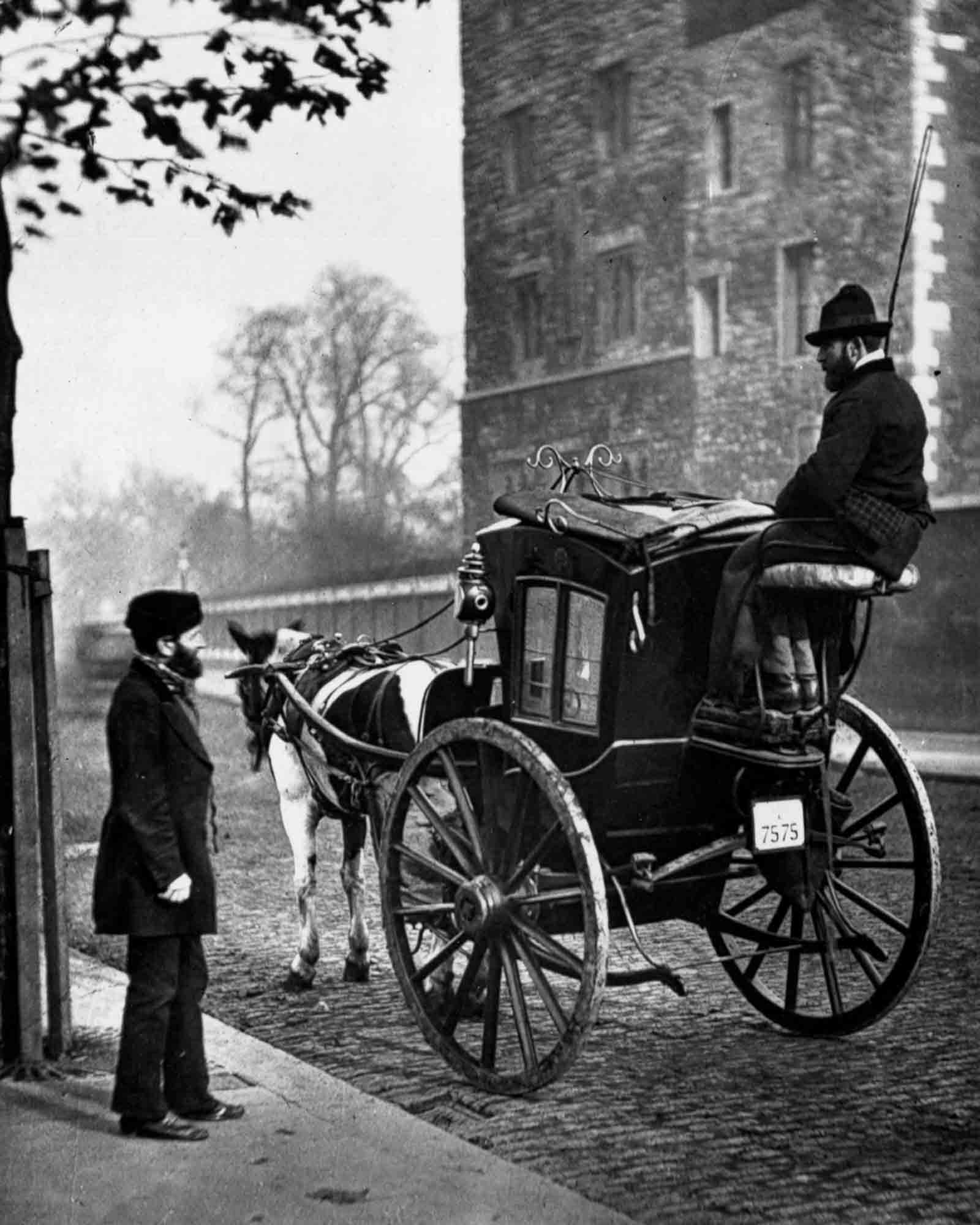
A horse-drawn hansom cab. 1877.
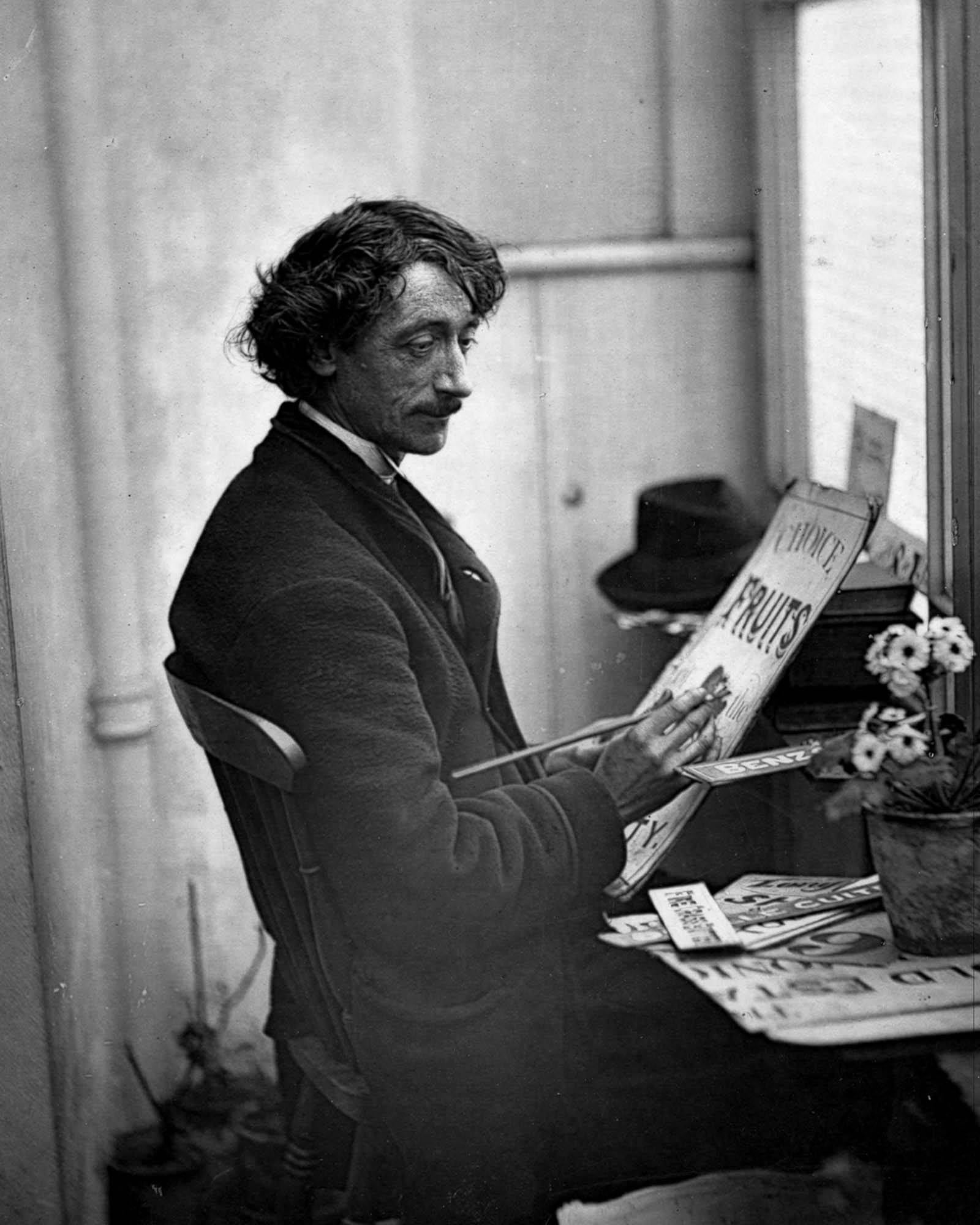
A signwriter at work in his studio. 1877.
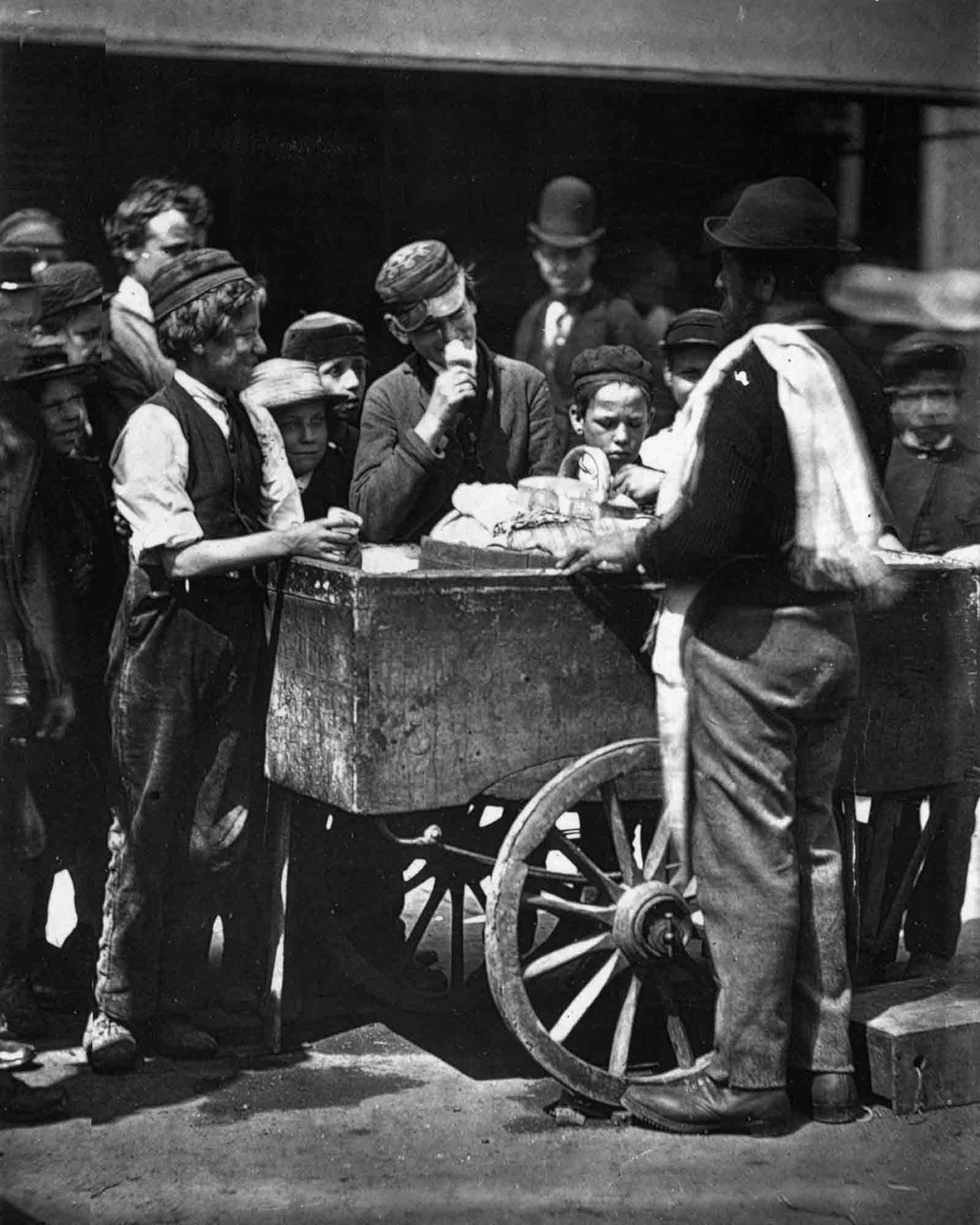
A street vendor sells halfpenny ices. 1876.
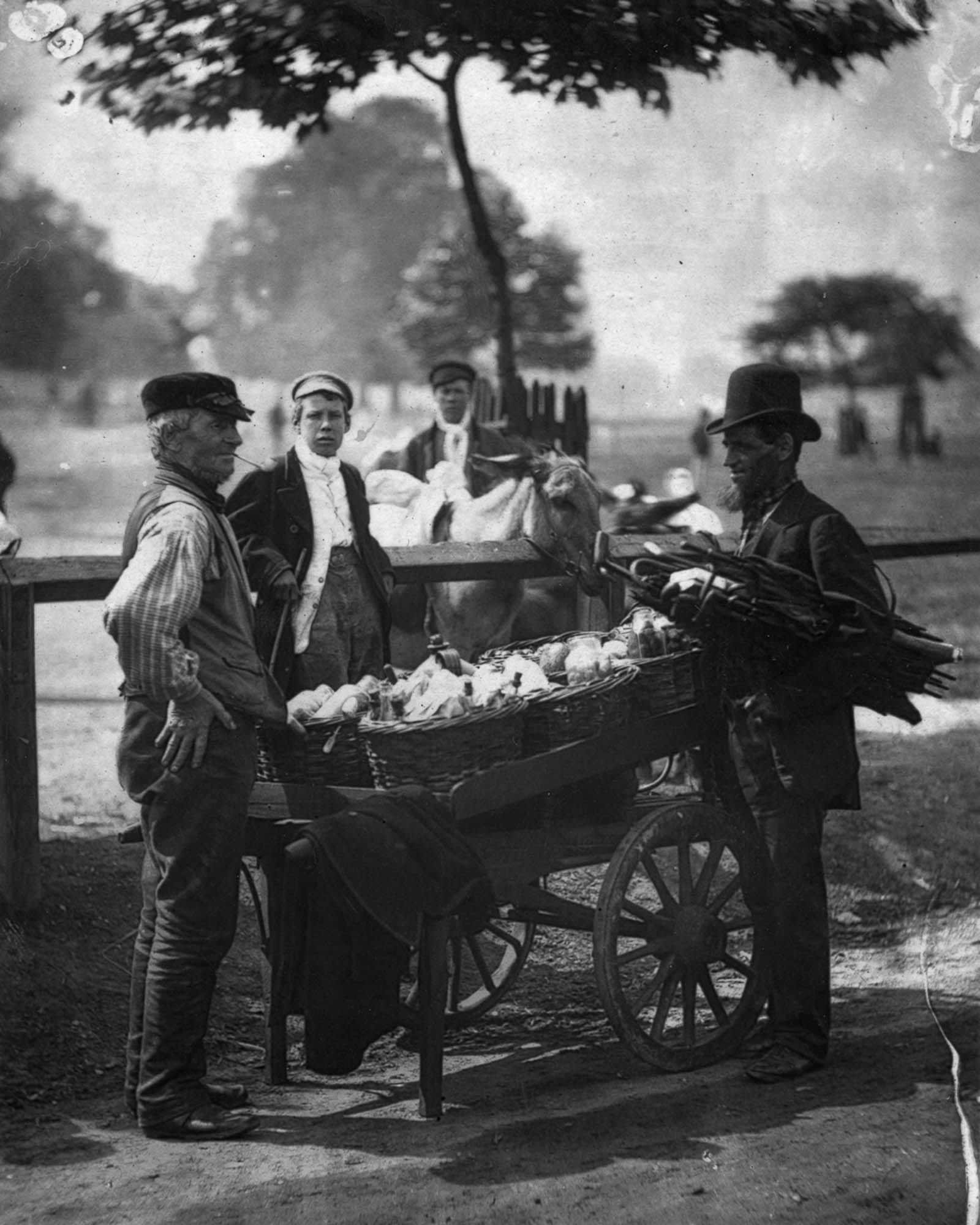
“Mush-Fakers” and ginger beer makers with their cart. 1877.

A man wears a sandwich-board advertisement. 1877.
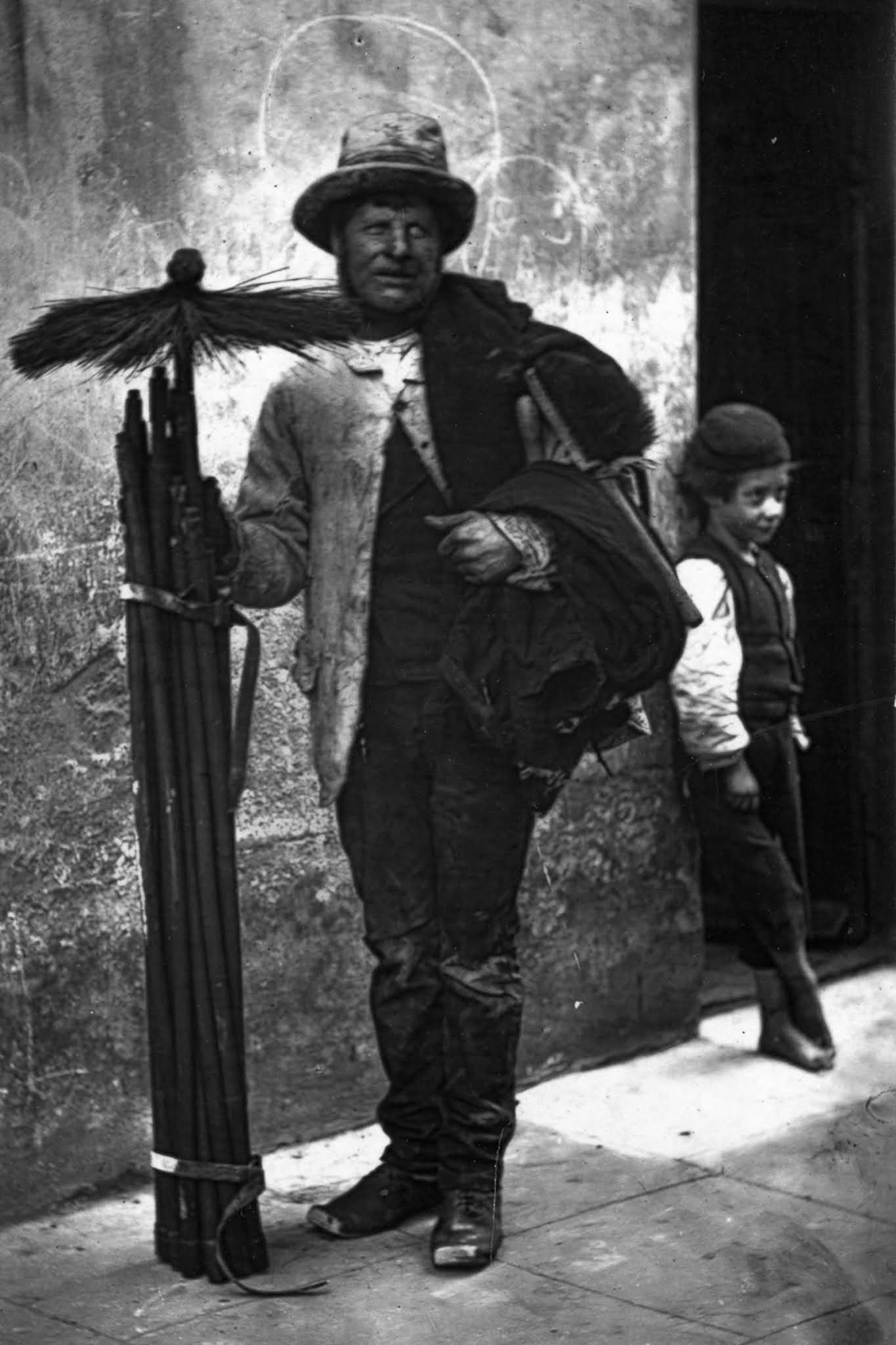
A chimney sweep and his assistant. 1877.

Barge workers on the Thames. 1877.

A locksmith mends locks at his stall. 1877.
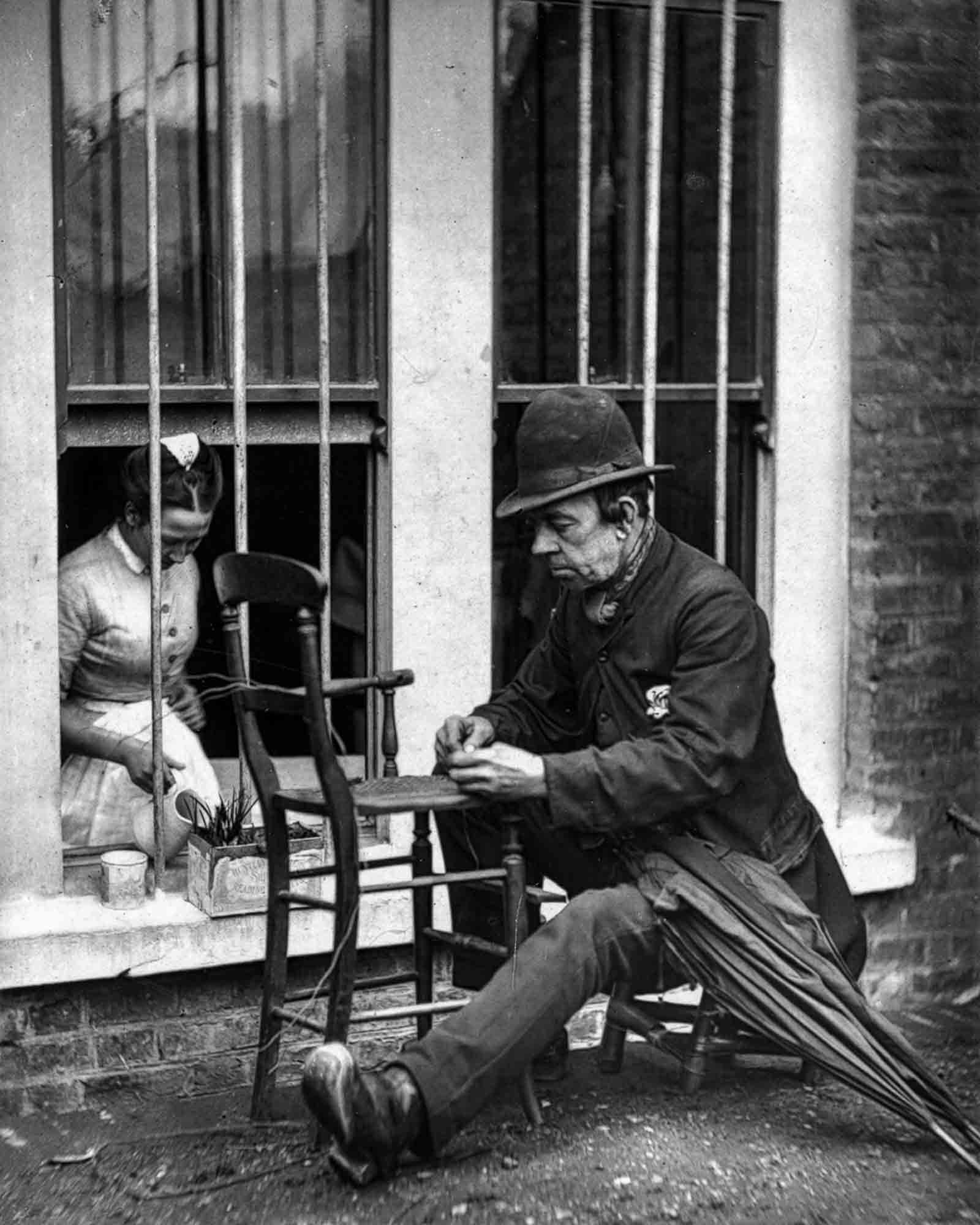
“Caney” the clown weaves cane strips into the seat of a wooden chair. 1877.

A shoeshine boy at work. 1877.
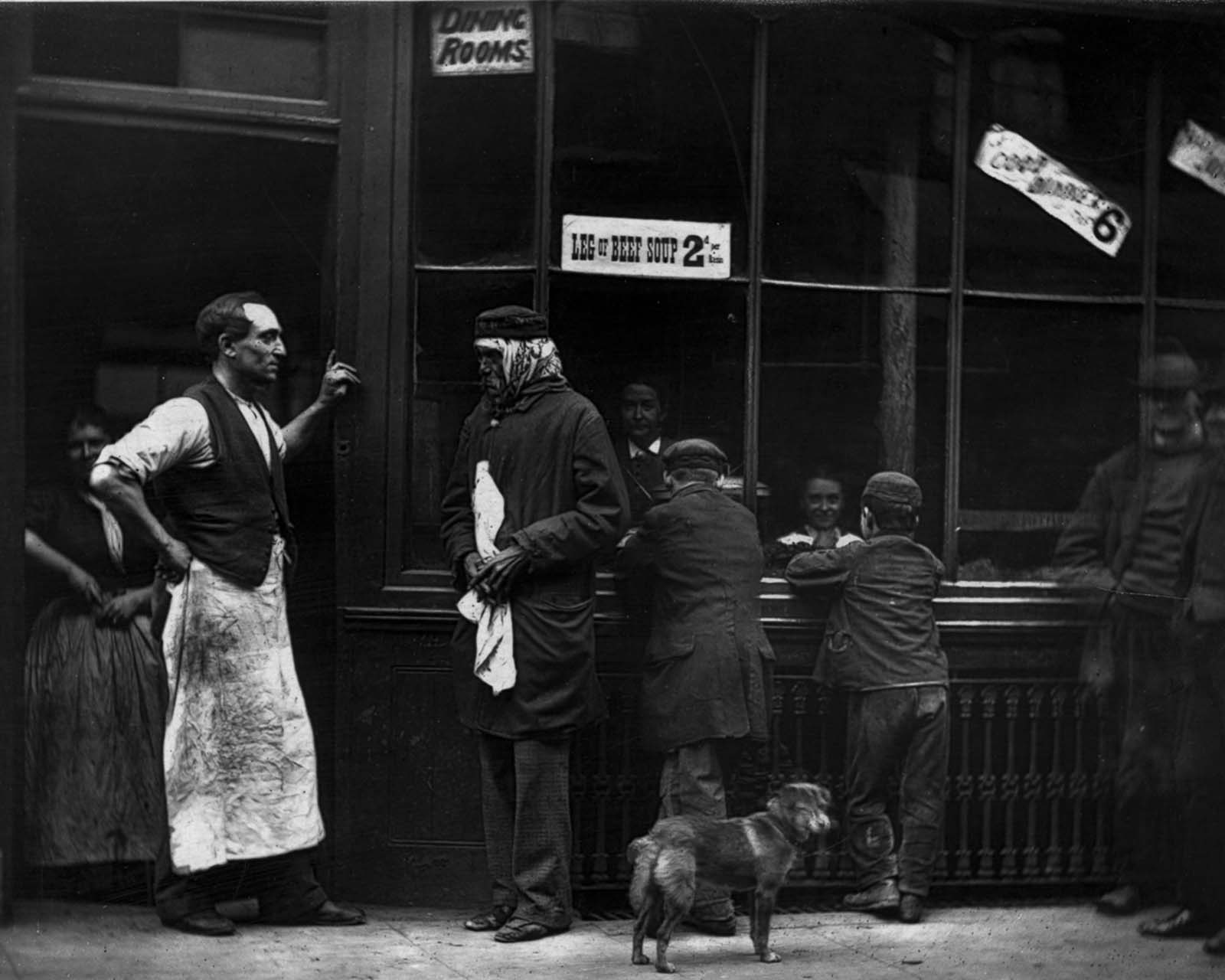
A dining room for ex-convicts. The owner, left, speaks with Ramo Sammy, a local Indian drummer known as the “tam tam man.” 1877.
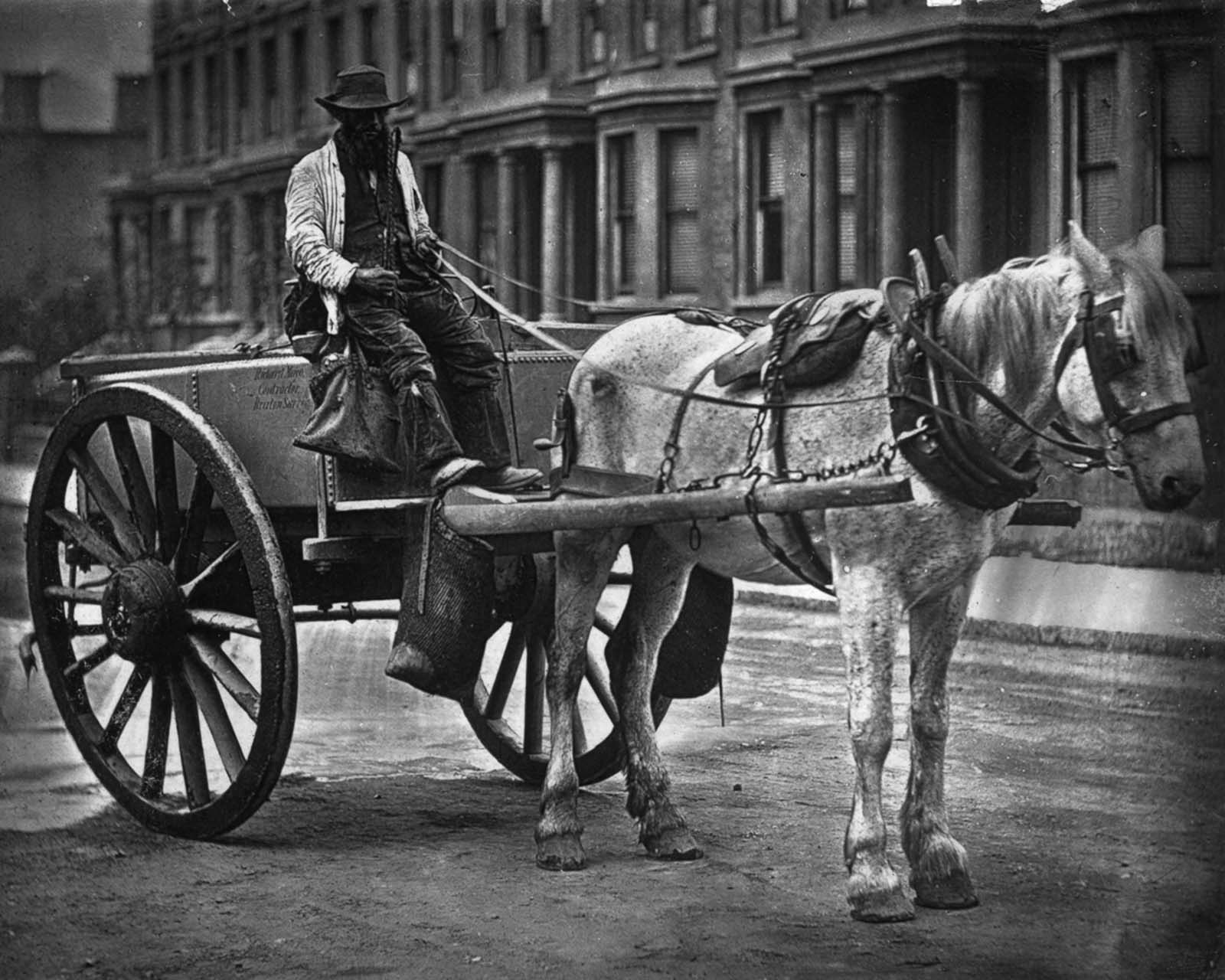
A water cart. 1877.

A beggar paid to look after a baby. 1877.
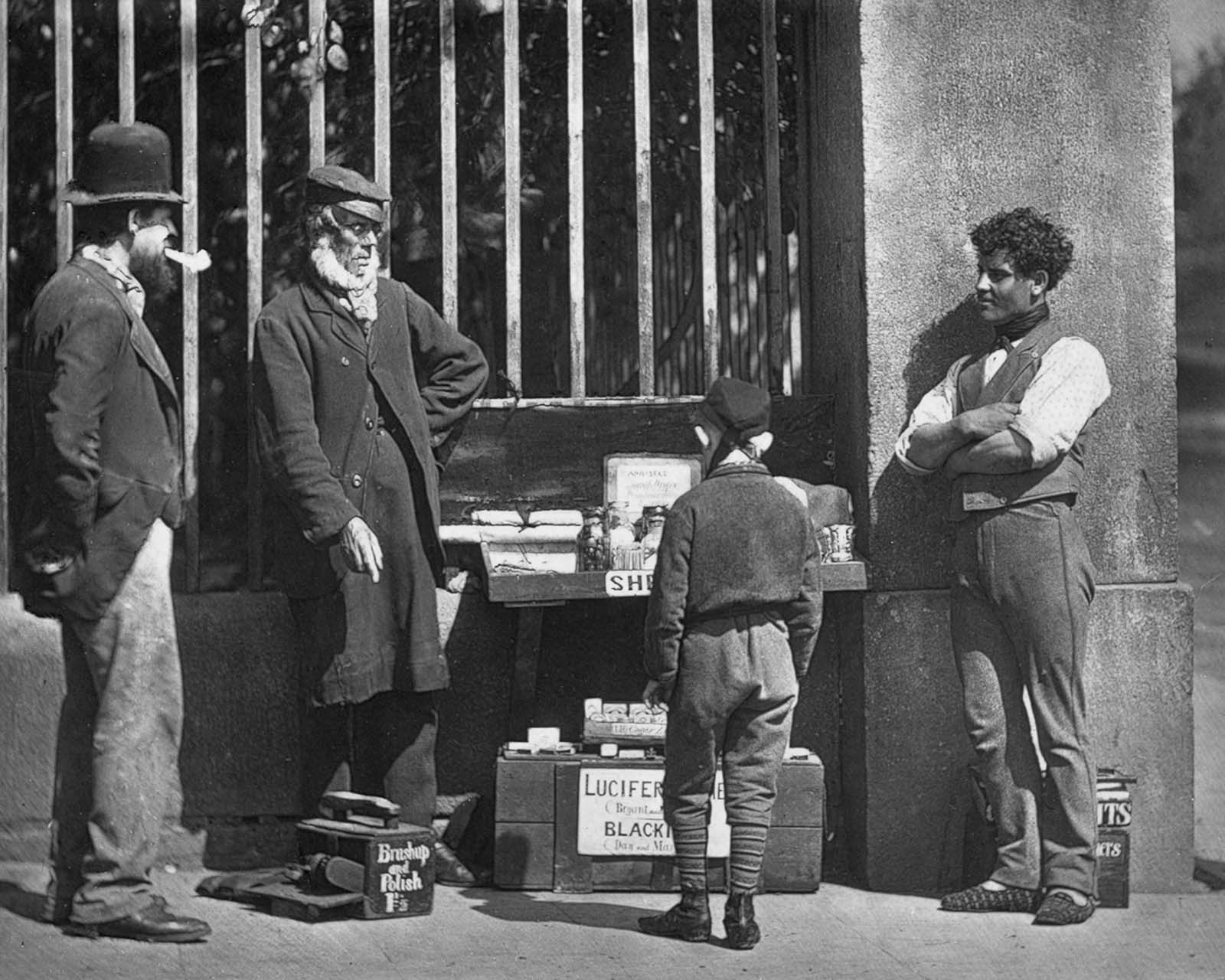
A street trader and shoeshine. 1877.

A fruit vendor. 1873.

A street procession on Bonfire Night, also known as Guy Fawkes Night. 1876.
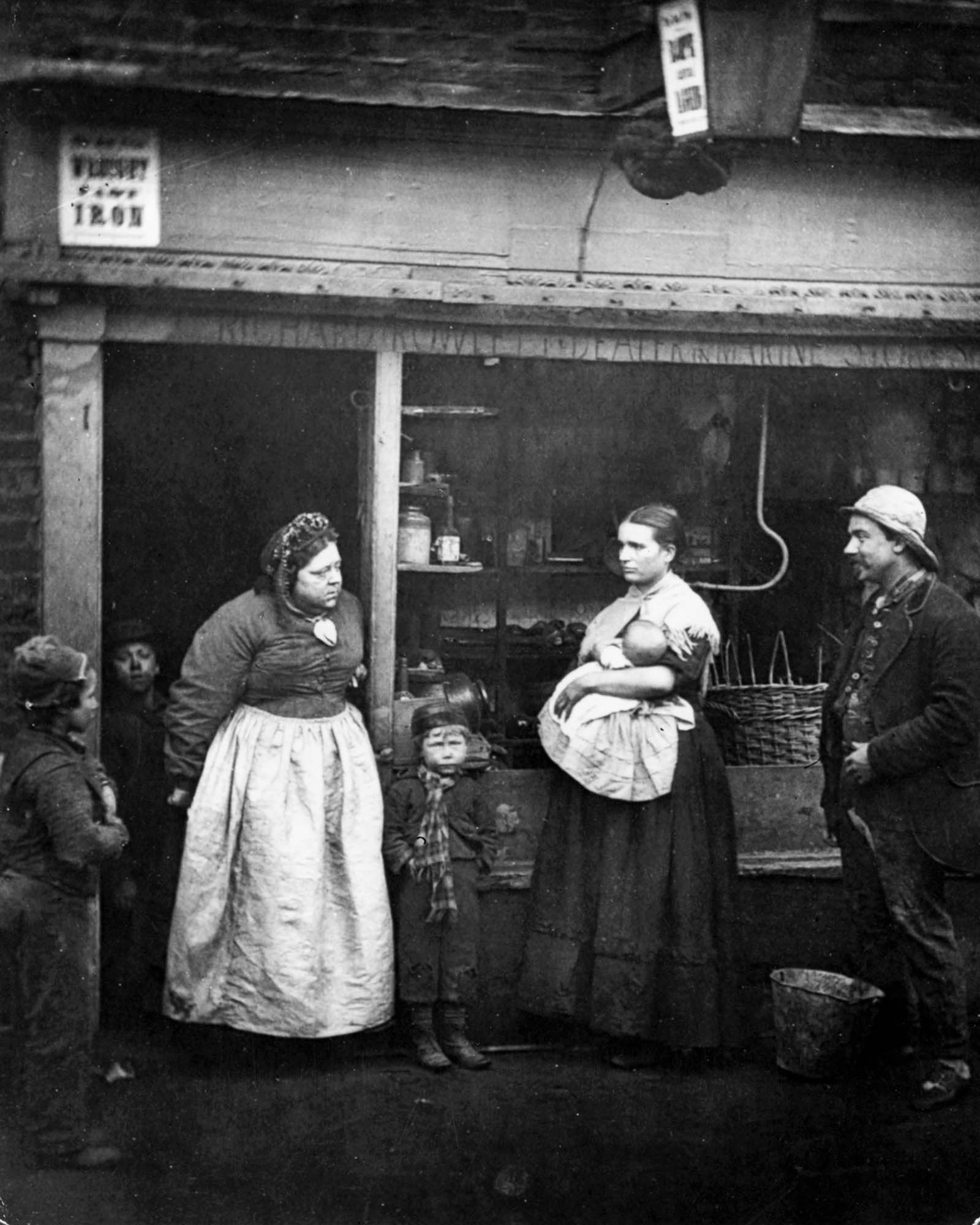
People in front of a rag shop in Lambeth, London, where the Thames annual tidal overflow causes hardship to the locals. 1877.
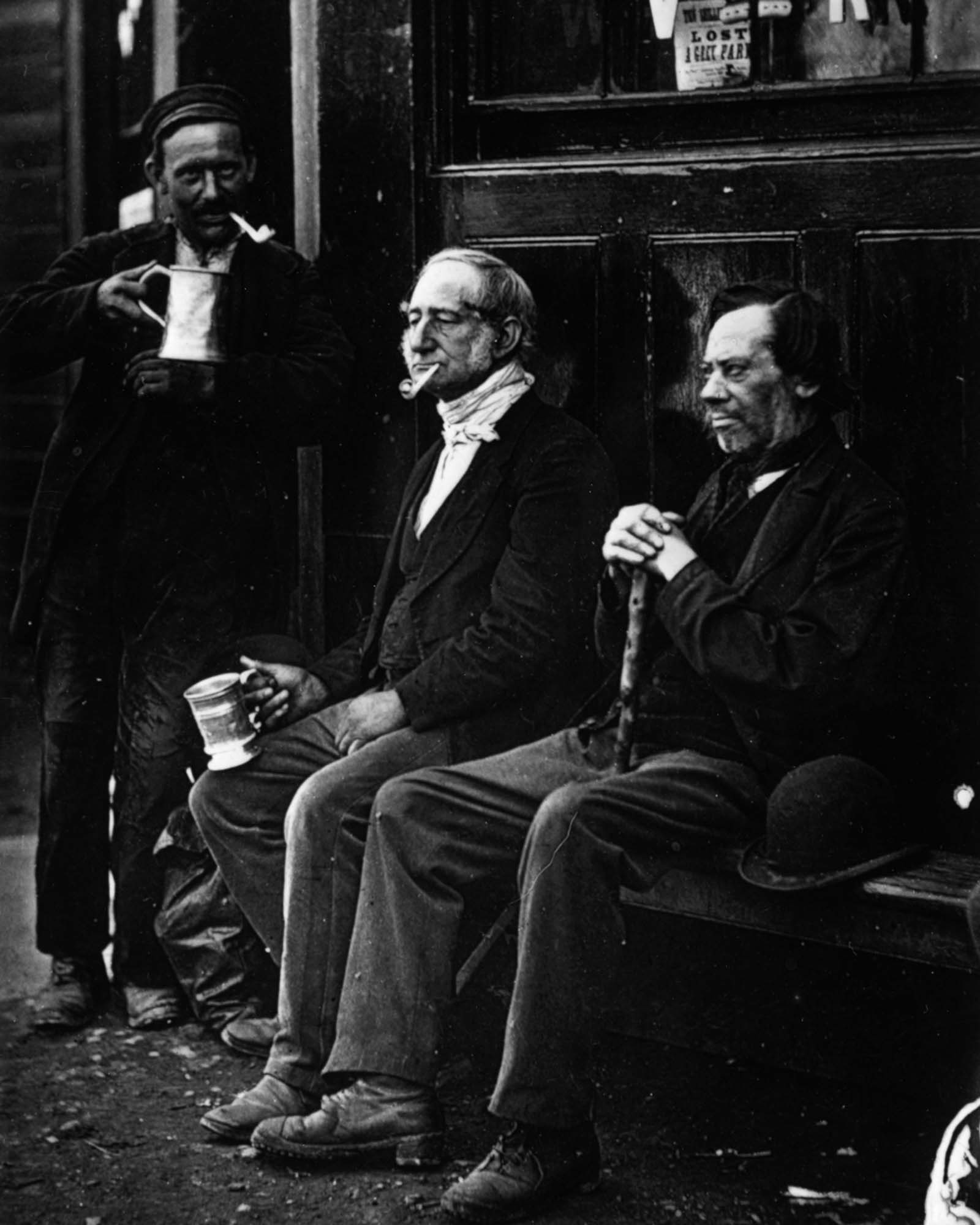
Friends enjoy a beer outside The Wallmaker, a public house. 1877.
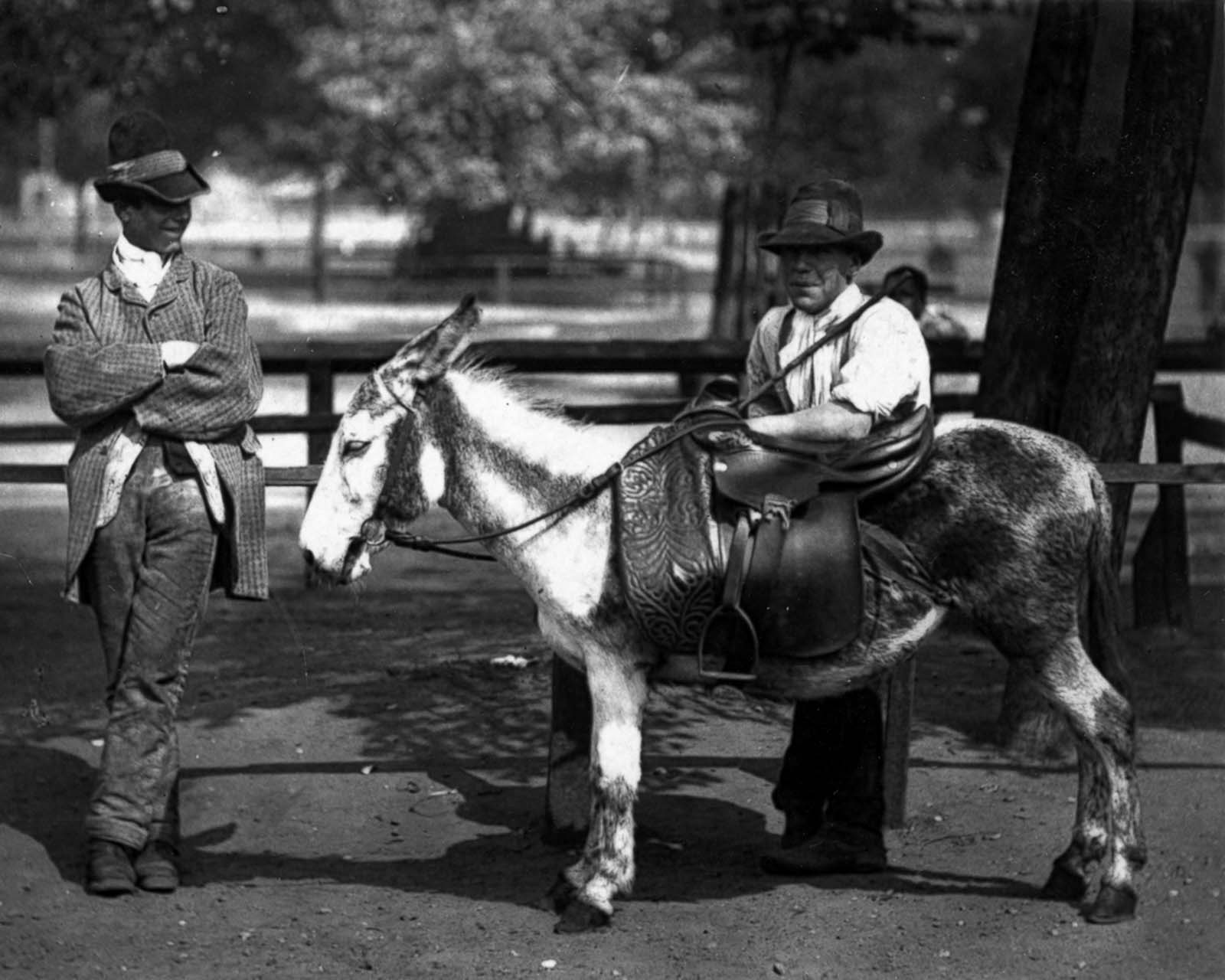
A man waits for fatigued or adventurous promenaders in a London common to approach him for a donkey ride. 1877.
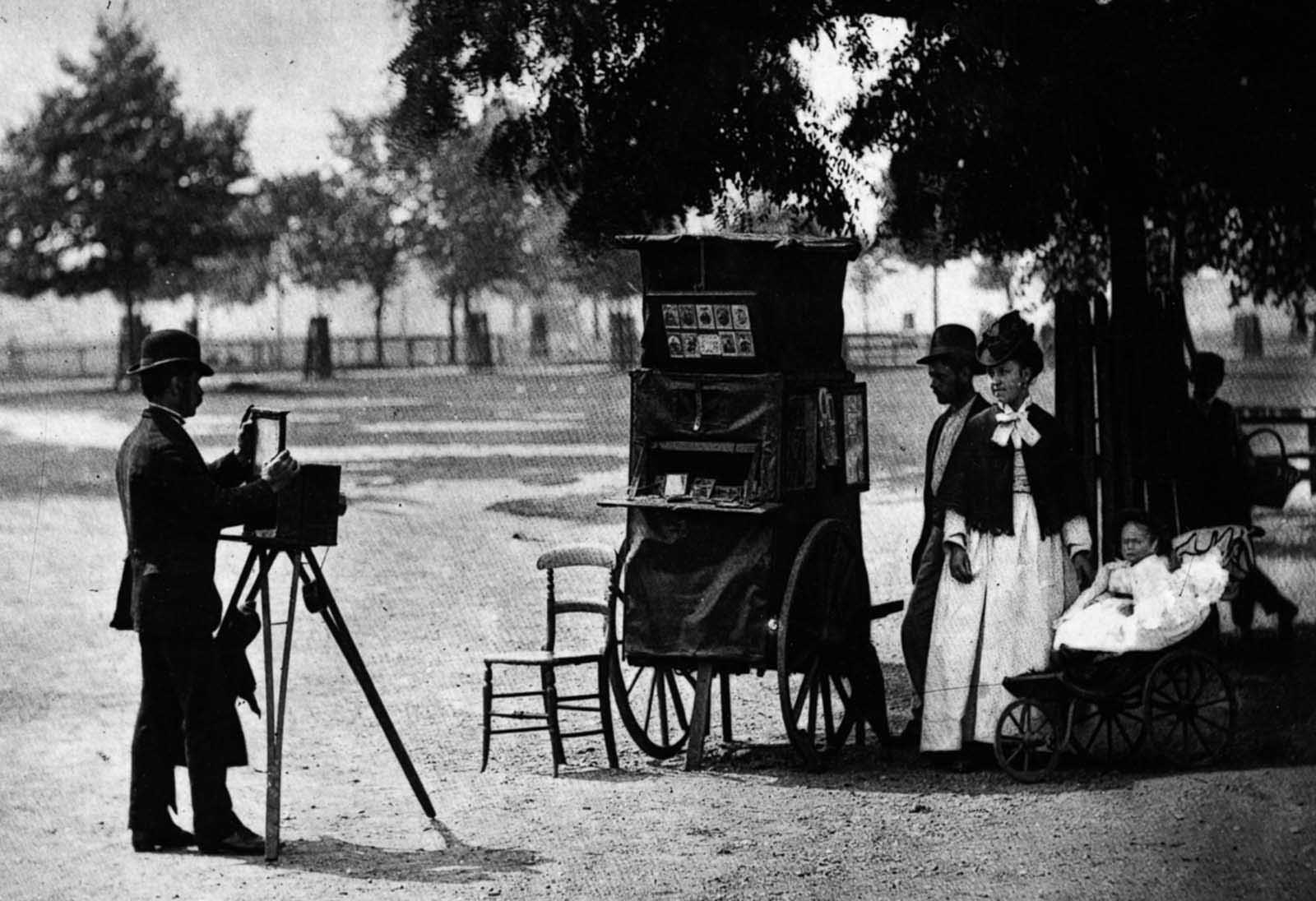
A street photographer at work on Clapham Common. 1877.
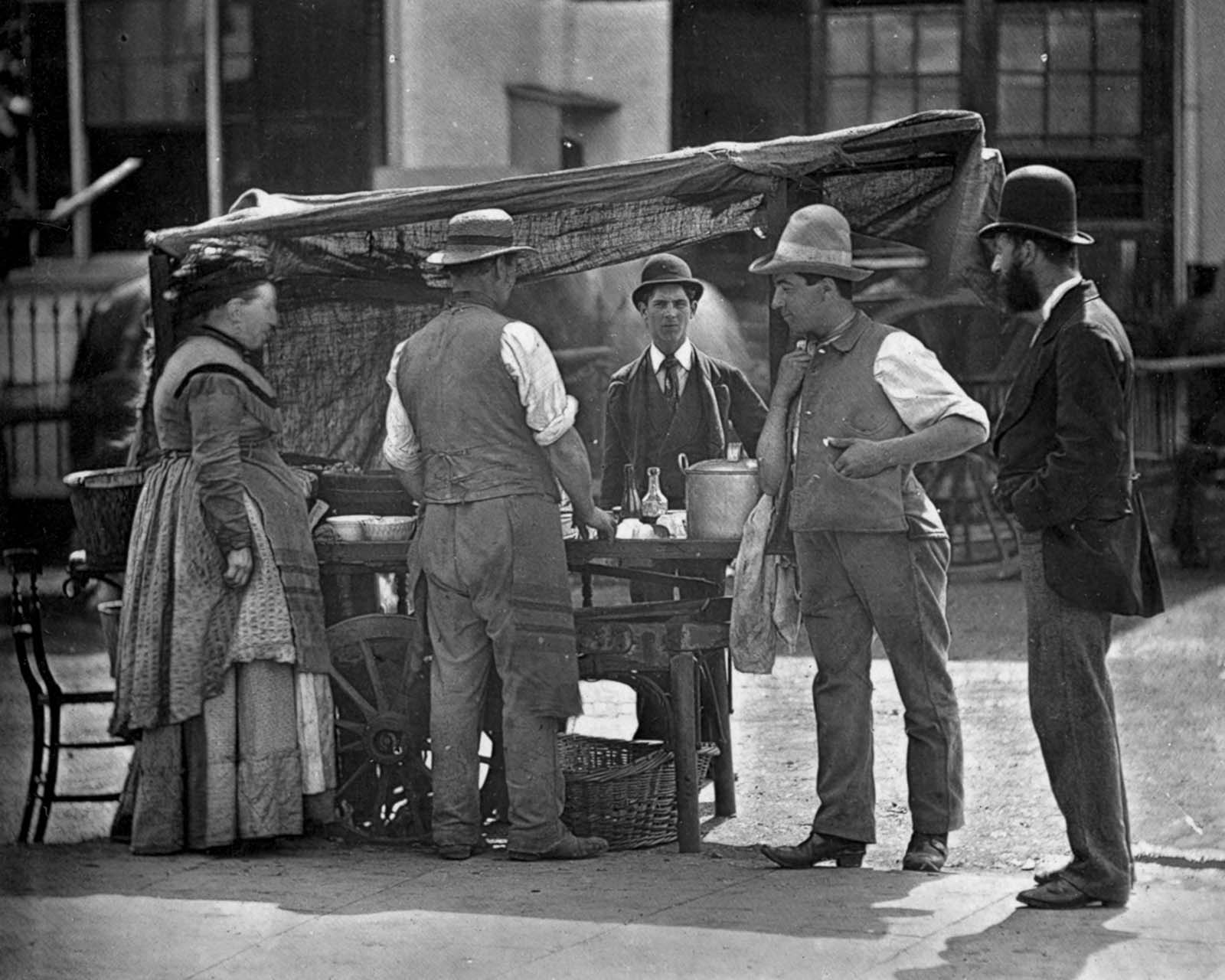
A shellfish stall owner sells oysters and whelks. 1877.
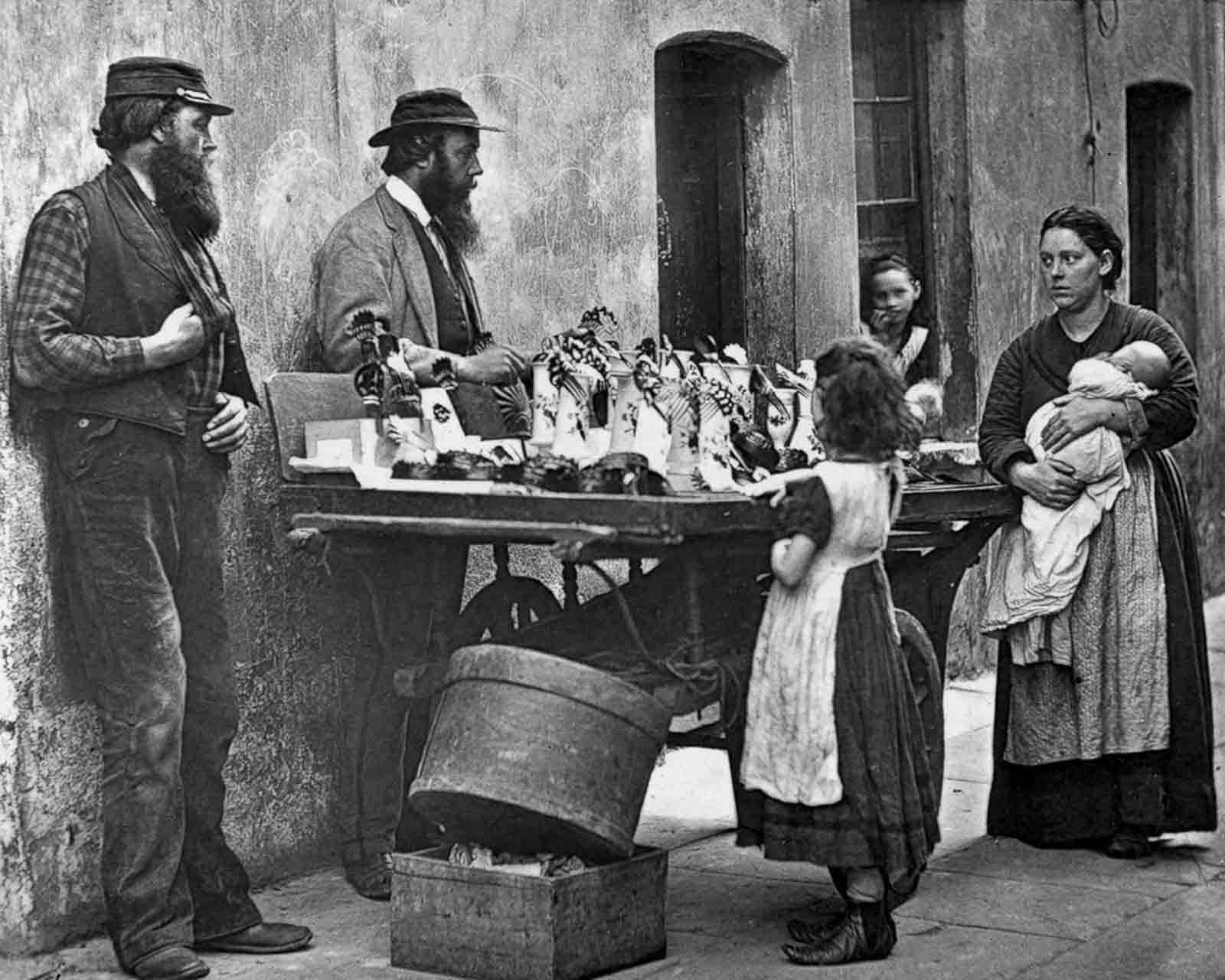
A fancy ware dealer sells ornaments from his barrow. 1877.
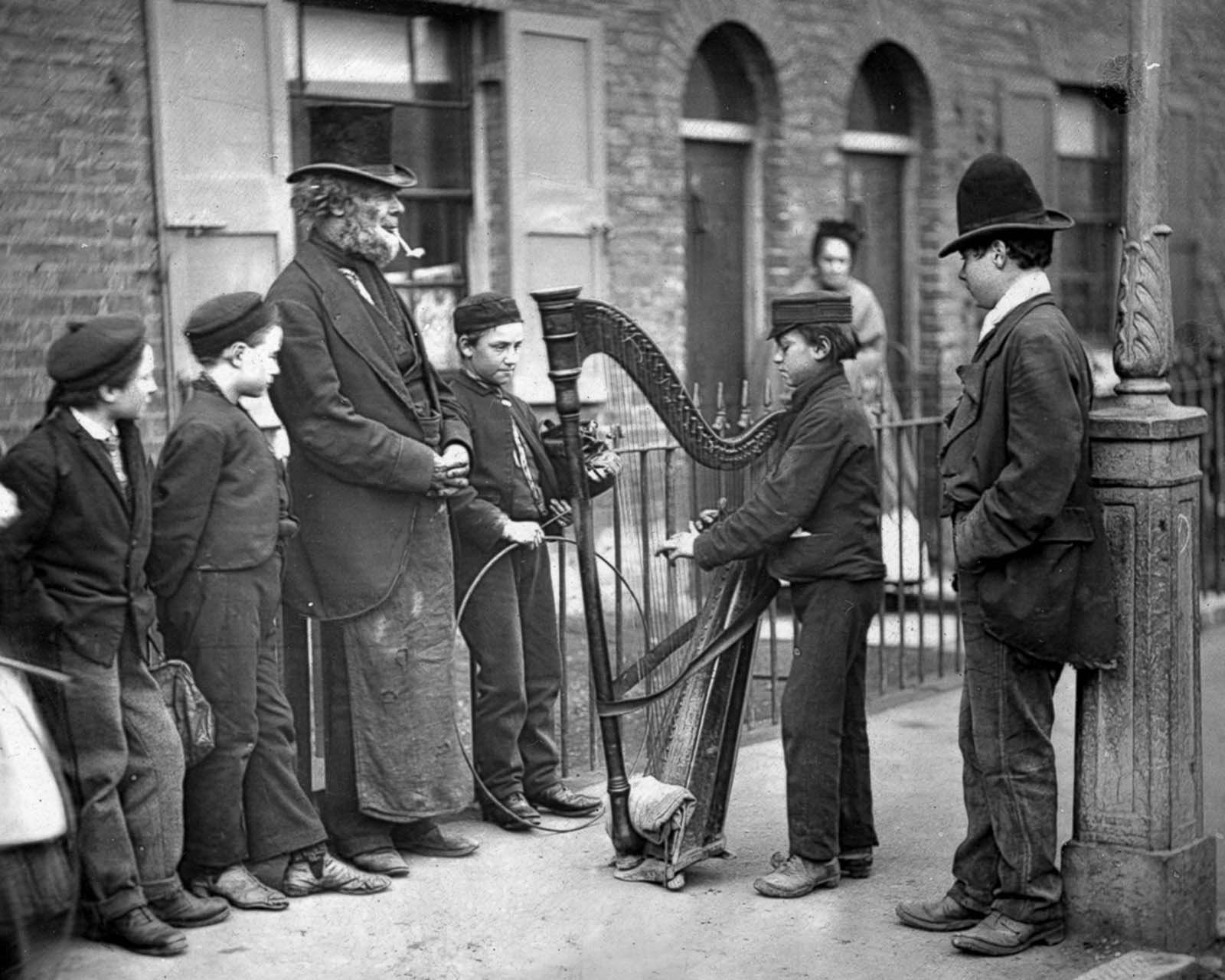
An Italian harpist entertains local children on the street. 1877.
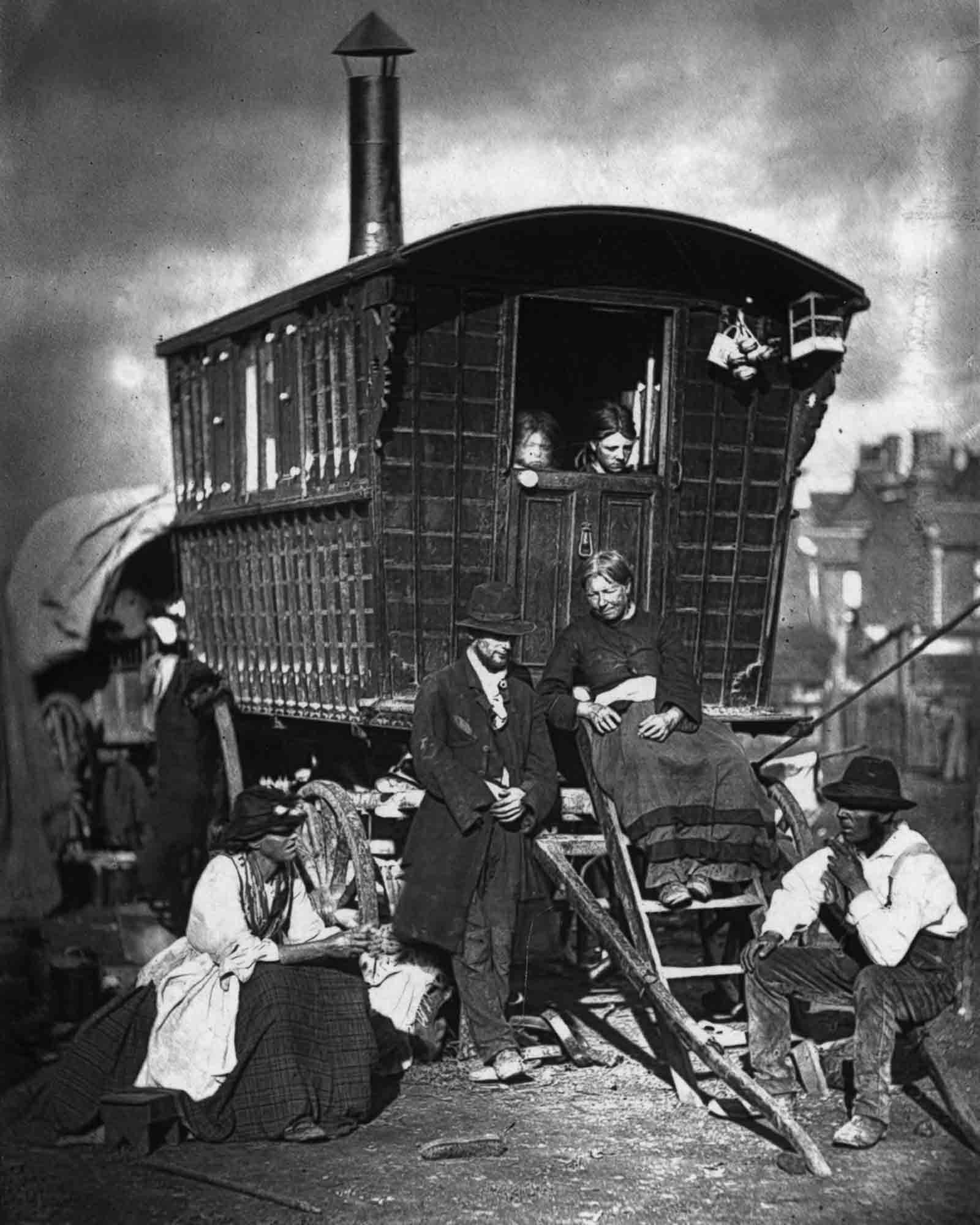
A “Gypsy” caravan at an encampment near Latimer Road in Notting Hill. 1877.
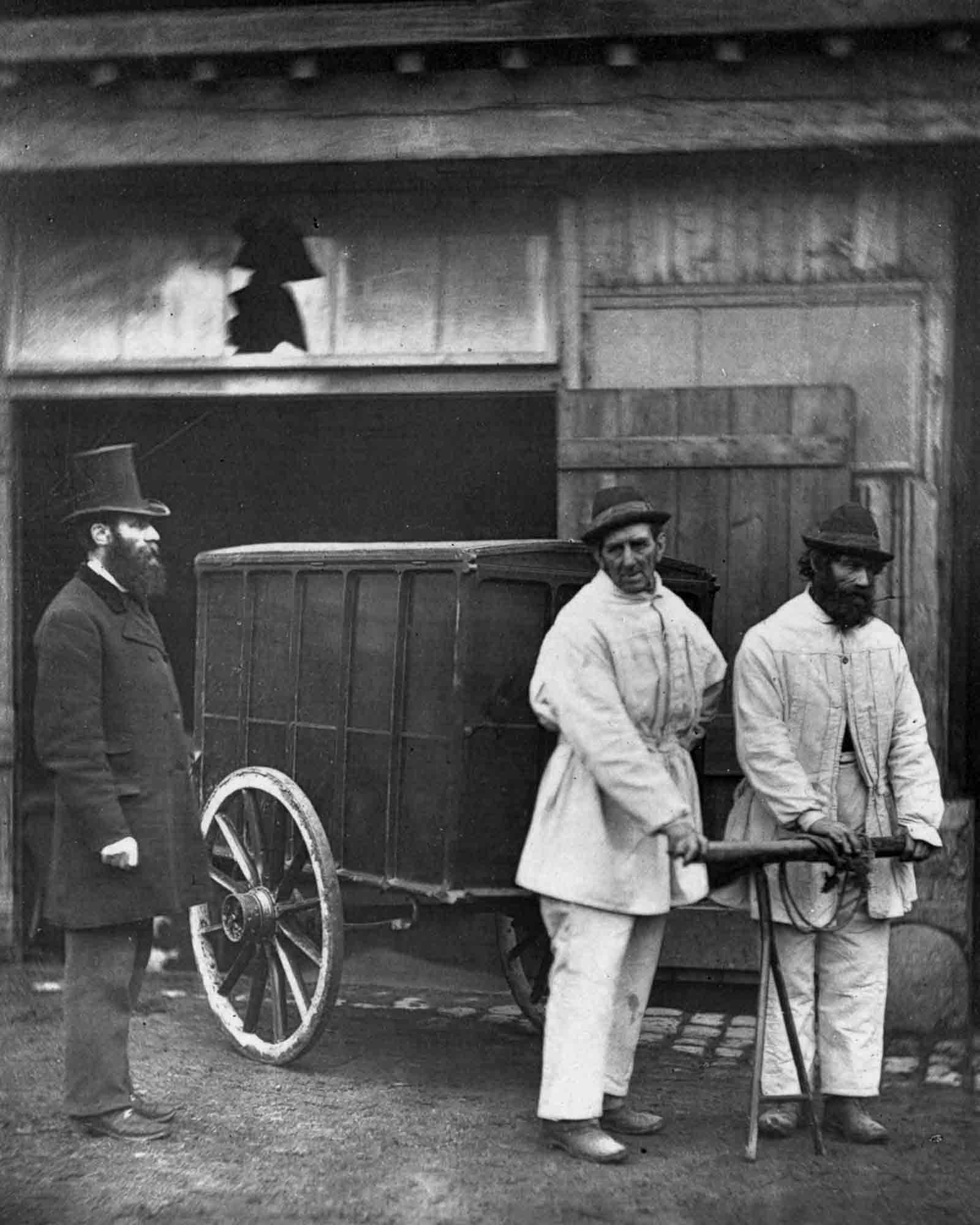
Public disinfectors sanitize the streets after an outbreak of smallpox. 1877.

Flower women selling bouquets at Covent Garden market. 1877.
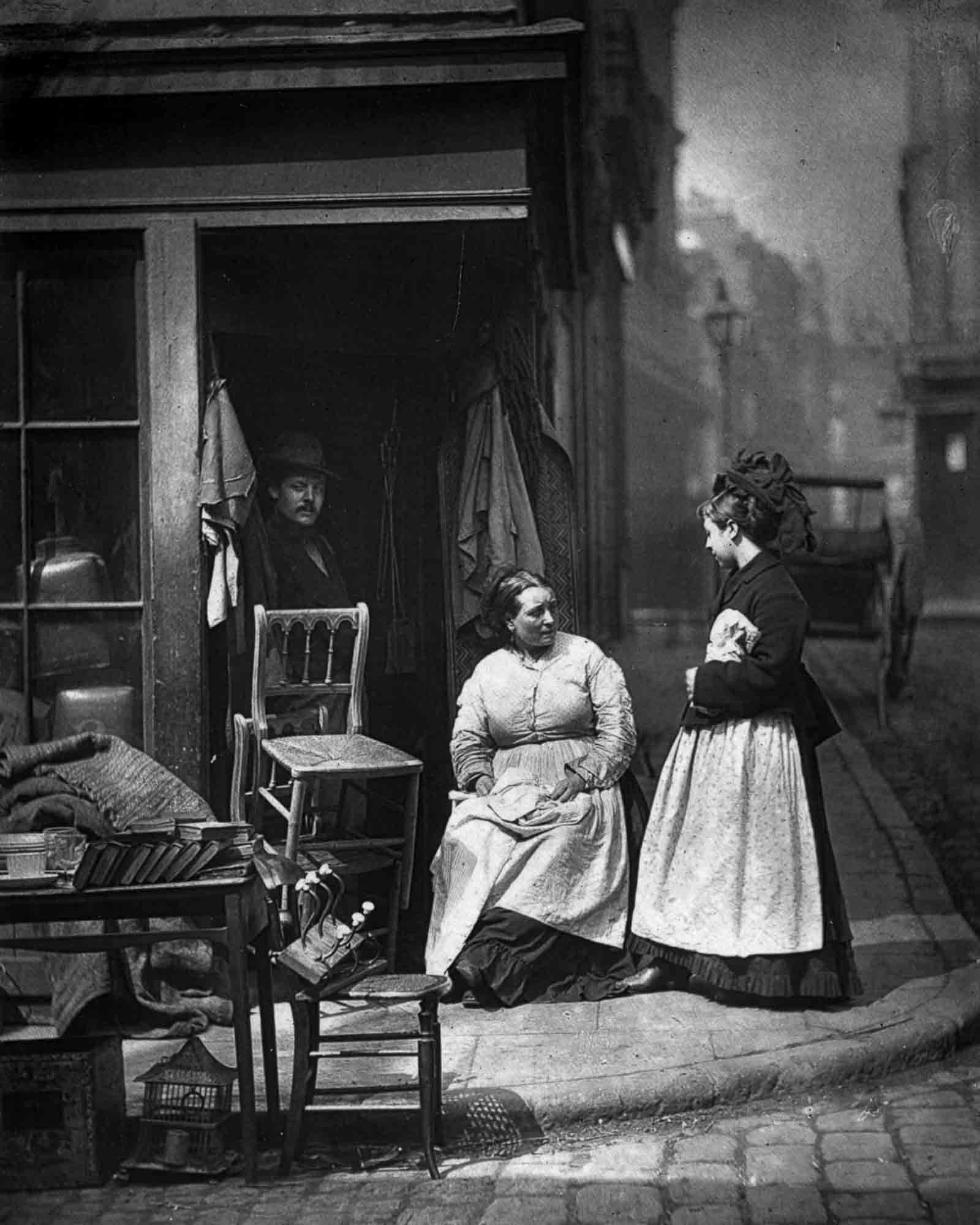
A secondhand furniture shop. 1877.
(Photo credit: John Thomson / Victorian London Street Life in Historic Photographs by John Thomson, Adolphe Smith 1994 / Wikimedia Commons).



